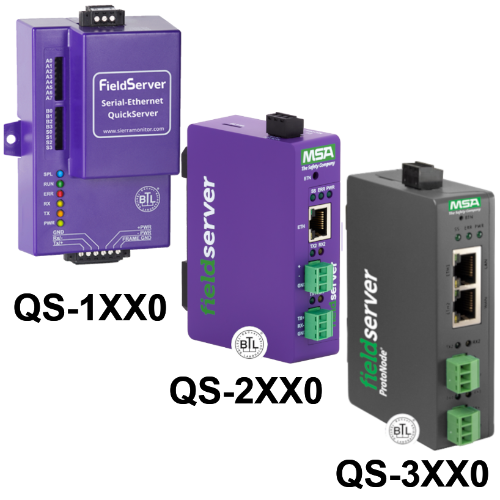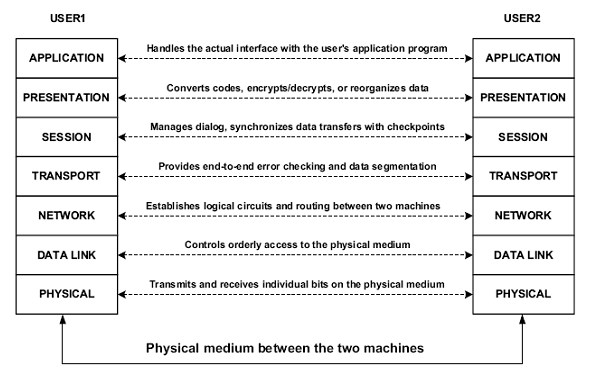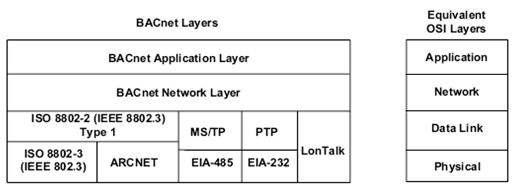BACnet - How is the BACnet architecture designed?
BACnet Integration Solutions
Chipkin has BACnet integration solutions for almost every situation. We specialize in network protocol communications and have over 20+ years of experience. Click for more information:

BACnet has an interesting architecture that all developers should know about; this will allow the effective operation of such building automation devices. The BACnet architecture is predominately limited to HVAC, lighting controls, and gateways.
BACnet emphasizes efficient, lightweight communication and is optimized for small networks, small inter-networks, and short messages.
BACnet consists of a collapsed architecture that corresponds to four layers of the Open Systems Interconnection (OSI) model. The seven-layer reference model is an international standard for conceptualizing network communication protocols and is widely used as the basis of many data communications standards.
The four layers from the OSI model within the BACnet architecture are:
- Application
- Network
- Data Link
- Physical
Since BACnet is a non-connection protocol, the need for message segmentation and end-to-end error checking is much less than in a connection-based protocol. Thus, the overhead of a discrete transport layer is not justified and the functions normally in a transport layer are delegated to the application layer. In addition, the session layer is not needed, and since BACnet uses a fixed encoding scheme and offloads security to the application layer, a separate presentation layer is not needed.
The following figure from the standard examines the basic structure of the OSI model:

Figure 1. Basic OSI Structure.
The next figure from the standard will present the BACnet architecture with the equivalent OSI layers to the developer:

Figure 2. BACnet Architecture.The collapsed architecture was chosen due to the specific features and requirements of BAC networks, including a requirement that the protocol overhead be minimized as much as possible.
BAC networks are local area networks (LAN). This is true even though in some applications it is necessary to exchange information with devices in a building that is very far away. The long-distance communication is done through telephone networks. The routing, relaying, and guaranteed delivery issues are handled by the telephone system and can be considered external to the BAC network.
BAC devices are static. They don't move from place to place and the functions that they are asked to perform do not change in the sense that a manufacturing device may make one kind of part today and some very different part tomorrow.
BACnet defines a protocol optimized for reliable and brief object messaging on a LAN. Based on the OSI model, BACnet is readily extended to many domains outside of the building automation and control networks for which it was originally intended, such as management applications and embedded control. In many of these applications, a specific part of BACnet can be applied with great benefit.
All developers should maintain an understanding of the BACnet architecture, especially when selecting devices for building automation applications.